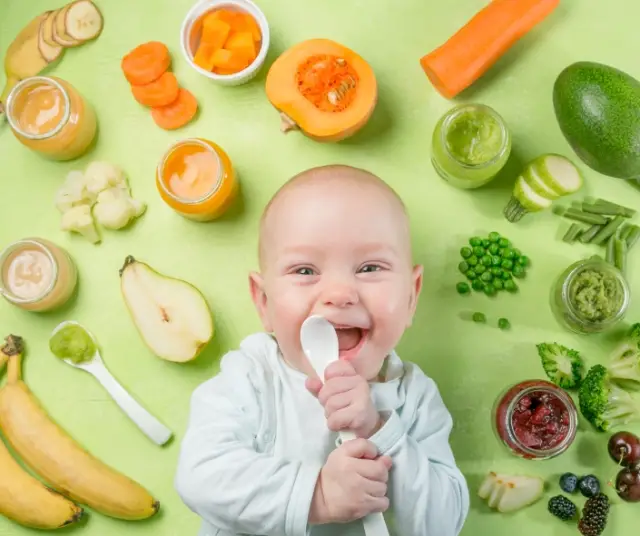Complementary feeding is an exciting time for parents and babies, but it can also be a stressful and confusing time. It is important to wait until the baby is physically ready to eat solid foods before starting complementary feeding, and to start with soft, easily digestible foods such as pureed fruit or vegetables.
When to introduce solid foods?
The ideal time to introduce solid foods into a baby's diet is when the baby is between four and six months of age. Although breast milk or formula remains the main source of nutrition for babies up to six months, babies as young as four months may begin to need more nutrients and energy.
However, it is important to wait until the baby is physically ready to eat solid foods before starting complementary feeding. It is recommended to wait until the baby can support his head and neck without help, sit without support and show interest in food. These are clear signs that the baby is ready for complementary feeding.
How to introduce solid foods
The introduction of solid foods should be gradual, starting with small amounts and slowly increasing as the baby gets used to the new texture and taste. Most babies will be ready to eat about a tablespoon of solid food a day at first, and this amount will gradually increase to three solid foods a day by the time the baby is nine to twelve months of age.
It is important to start with soft, easily digestible foods, such as pureed fruits or vegetables . Food should be cooked and then crushed or blended to a smooth consistency. It is recommended to start with only one fruit or vegetable at a time and wait a few days before introducing another. This helps identify any allergic reactions or food intolerances.
What foods are the best for the baby
The foods that are introduced into the baby 's diet during complementary feeding should be rich in nutrients and easy to digest. Some of the best foods to start with include:
- Fruit Puree – Fruits like bananas, apples, pears, and avocados are easy to digest and rich in important nutrients like vitamin C, potassium, and fiber.
- Vegetable puree: Vegetables such as sweet potatoes, pumpkins, carrots, and broccoli are an excellent source of nutrients such as vitamin A, fiber, and calcium.
- Baby Cereals – Baby cereals are fortified with important nutrients like iron and zinc and are easy for babies to digest.
- Protein: As the baby grows, proteins such as pureed chicken, fish or lean meat can be introduced. It is important to cook them well and make sure they are cut into small, soft pieces so that the baby can eat them easily.
It is also important to avoid certain foods during complementary feeding. Some foods, such as honey and whole nuts, can contain dangerous bacteria that can be harmful to babies. Also, added salt and sugar should be avoided in baby food, as their digestive system is not yet ready to process them.
Helpful tips
Here are some helpful tips to make complementary feeding easier and less stressful for parents and babies:
- Start with soft, easy-to-digest foods to help baby get used to the new texture and taste of food.
- Introduce only one fruit or vegetable at a time to help identify any allergic reactions or food intolerances.
- Cook foods thoroughly and make sure they are cut into small, soft pieces so baby can eat them easily.
- Do not add salt or sugar to baby's food, as their digestive system is not yet ready to process them.
- Be patient and respect the baby's appetite. Babies may need several tries before accepting a new food.
Also, remember that complementary feeding does not mean that the baby should stop receiving breast milk or formula. Milk remains the main source of nutrition for the first six months, and should continue to be offered to babies even after starting complementary feeding. Over time, the amount of milk that the baby consumes will decrease as the amount of solid food that the baby consumes increases.
It is also important to remember that complementary feeding should not be a race. Babies have different rhythms and needs, and some may take longer to get used to solid food than others. Be patient and respect the baby's appetite. Over time, your baby will develop a healthy appetite and become accustomed to a variety of foods.
